1885 Daimler Reitwagen
-
A while back I went thru a phase of modeling only "one-off" vehicles. Not sure why,
but I did. Found a lot of interesting possibilities, tackled quite a few of them.
Unfortunately I never completely finished any of them. Some are more finished than
others.
I knew from the gitgo that attempting to model something that only one was ever made
would be challenging, especially the older ones (one goes back over 200 years), simply
due to the low volume and quality of reference photos. Some of the older vehicles no
longer even exist, haven't for a long time, although some have had "replicas" made of
them (some better than others, some downright laughable).
Because of the low number of photos of the real thing, I have had to rely on these
replicas for a lot of my modeling information. I didn't like doing that, some were
obviously innacurate, but I did the best I could with what I had available.Anyhow, I'll be posting some of these models here.
The first one is the 1885 Daimler Reitwagen (riding wagon), considered by many to be
the world's first motorcycle.THE HISTORY
(This is a bit long, but I love doing a model that has an interesting (to me) history)
The invention of German engineer Gottlieb Daimler, the 1885 Daimler Reitwagen (riding wagon) is generally accepted as the world's first motorcycle. While there were three other steam powered two-wheelers that preceded the Reitwagen (the Michaux-Perreaux and Roper of 1867–1869, and the 1884 Copeland), the The Daimler Reitwagen was the first motorcycle to utilize the gasoline internal combustion engine, which would later evolve into today's more modern version.
The Reitwagen's status as the first motorcycle rests on whether the definition of a motorcycle includes having an internal combustion engine. The Oxford English Dictionary uses this criterion. Even by that definition, the use of four wheels instead of two raises doubts. If the outriggers are accepted as auxiliary stabilizers, they point to a deeper issue in bicycle and motorcycle dynamics, in that Daimler's testbed needed the training wheels because it did not employ the then well-understood principles of rake and trail. For this and other reasons motoring author David Burgess-Wise called the Daimler-Maybach "a crude makeshift", saying that "as a bicycle, it was 20 years out of date." Cycle World's Technical Editor Kevin Cameron, however, maintains that steam power was a dead end and the Reitwagen was the first motorcycle because it hit upon the successful engine type, saying, "History follows things that succeed, not things that fail."
The actual start to the Reitwanen began in 1876. Before Daimler has his stroke of genius, the German went to work at the Deutz-AG-Gasmotorenfabrik in Cologne as a technical director alongside the company's half-owner Nikolaus Otto. It was Otto who first came up with a four-stroke internal-combustion engine in 1976. And while the inventor sought to have the engine patented, Karl Benz beat him out by patenting his two-stroke engine first. (Seems to me that a four-stroke and two-stroke engine would qualify for seperate patents, but I can only report the facts as I read them.)
Daimler was fired in 1880 amid rumors of jealousy and greed and was followed out by Wilhelm Maybach, the company's chief designer. Together, the exiled director and his loyal designer started to work on their own version of Otto's engine in a converted Greenhouse on an estate in Taubenheimstrase in Cannstatt, Stuttgart.
The greenhouse with its workbench and smithy became the refuge of the two engineers. Daimler and Maybach worked day and night and in complete secrecy. Even Daimler’s family and domestic staff had no idea of what was going on in the greenhouse. A suspicious gardener even called the police, believing that the greenhouse was a money-counterfeiting workshop. But in a night-time search the police found nothing but tools and engine components. From then on, Daimler and Maybach were left alone to continue
their work.Five years later the two were successful. Their first version was a petrol engine with a single horizontal cylinder that could move 264cc. It operated off of a float metered carburetor and mushroom intake valves that used the suction of the piston's intake stroke to open. The engine was air cooled and could pump out 5 hp and 600 rpm. (While 600 rpm isn't much today, the amount of power was a huge step up from other engines during that time, which normally only got up to 180 rpm.) The engine was started by a crank handle and a hot tube ignition system. Daimler and Maybach also included two fly wheels on either side of the crankshaft, cam operated exhaust valves that allowed for high speed operation and the whole thing was encased in a cast aluminum crankcase. This first engine weighed 110 lbs and was 30 inches tall.
But the two needed to test the engine to find out how well it would really move something forward. Their goal was not to create a motorcycle, but just to learn what the engine could do. Daimler's ultimate goal was to create a four wheeled "horseless carriage" (better known as a car today), but the engine was still too small for such a feat. Instead, the engineer fashioned it to a wood frame bicycle. (After searching the web for wood frame bicycles of the era, I decided that he had to have custom built the bicycle rather that adapting one for his purposes.)
In the following year, Daimler and Maybach tweaked the design to give the motorcycle a two-stage, two-speed transmission with a primary belt drive and the final drive being a ring gear located on the rear wheel. But it was after that that Daimler and Maybach refocused on their dreams of automobiles with four wheels and abandoned their two wheeled vehicle. Though their invention is one of the most popular today, back then, the two saw no future for it and never sold a single one to the public. Even the lonely original was lost in a factory fire at Cannstatt in 1903. The production facilities, along with ninety vehicles, including three race cars were destroyed.
Only replicas of the Reitwagen remain.
THE MODEL
I could only find five photos of the original....
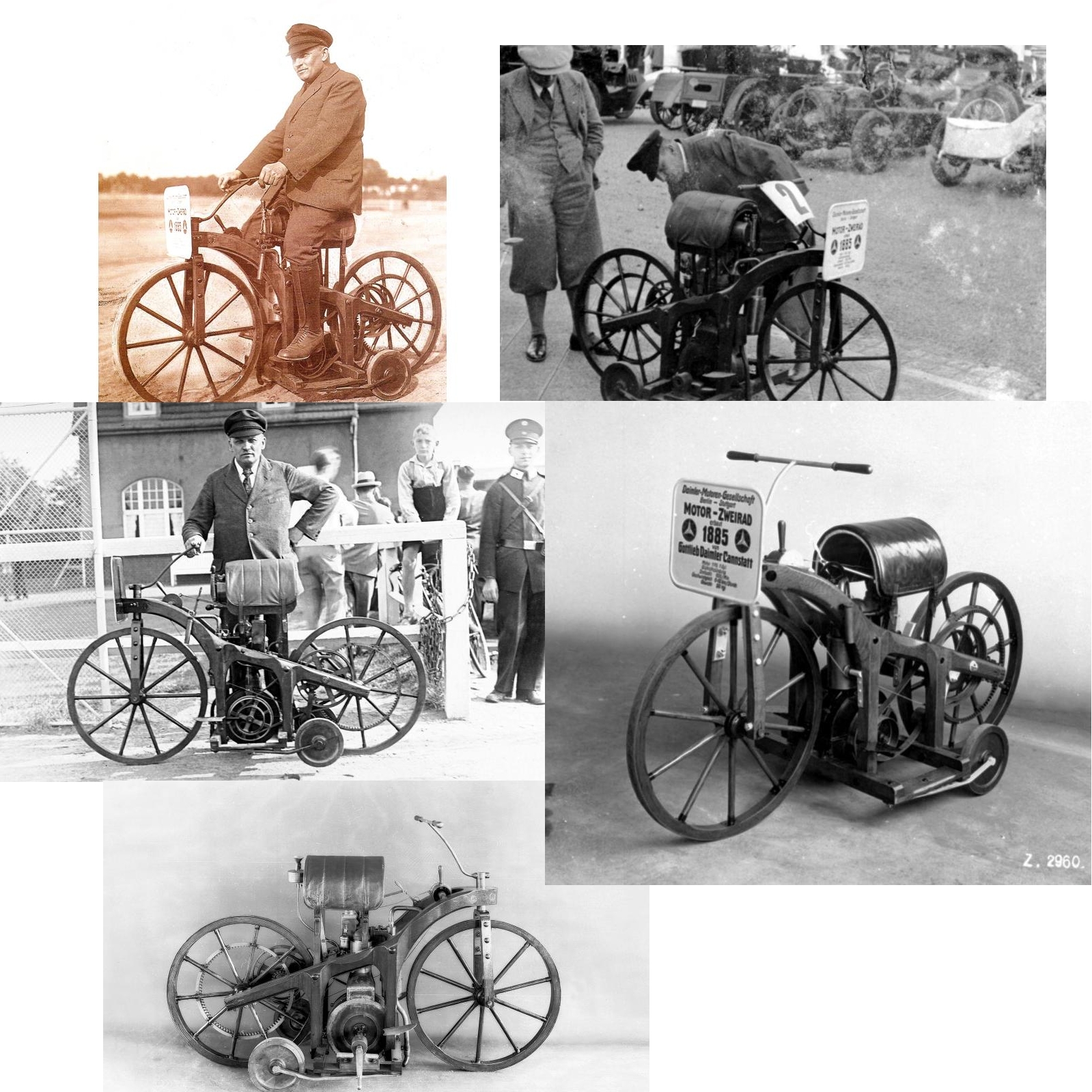
although I have my doubts about the bottom one.
But there are a good number of replicas around. I ultimately chose one that seemed to be most faithful to Daimler's creation to use as my reference model.With no suspension and steel clad wooden wheels, I can only imagine how it felt to drive this thing on the roads of the time.
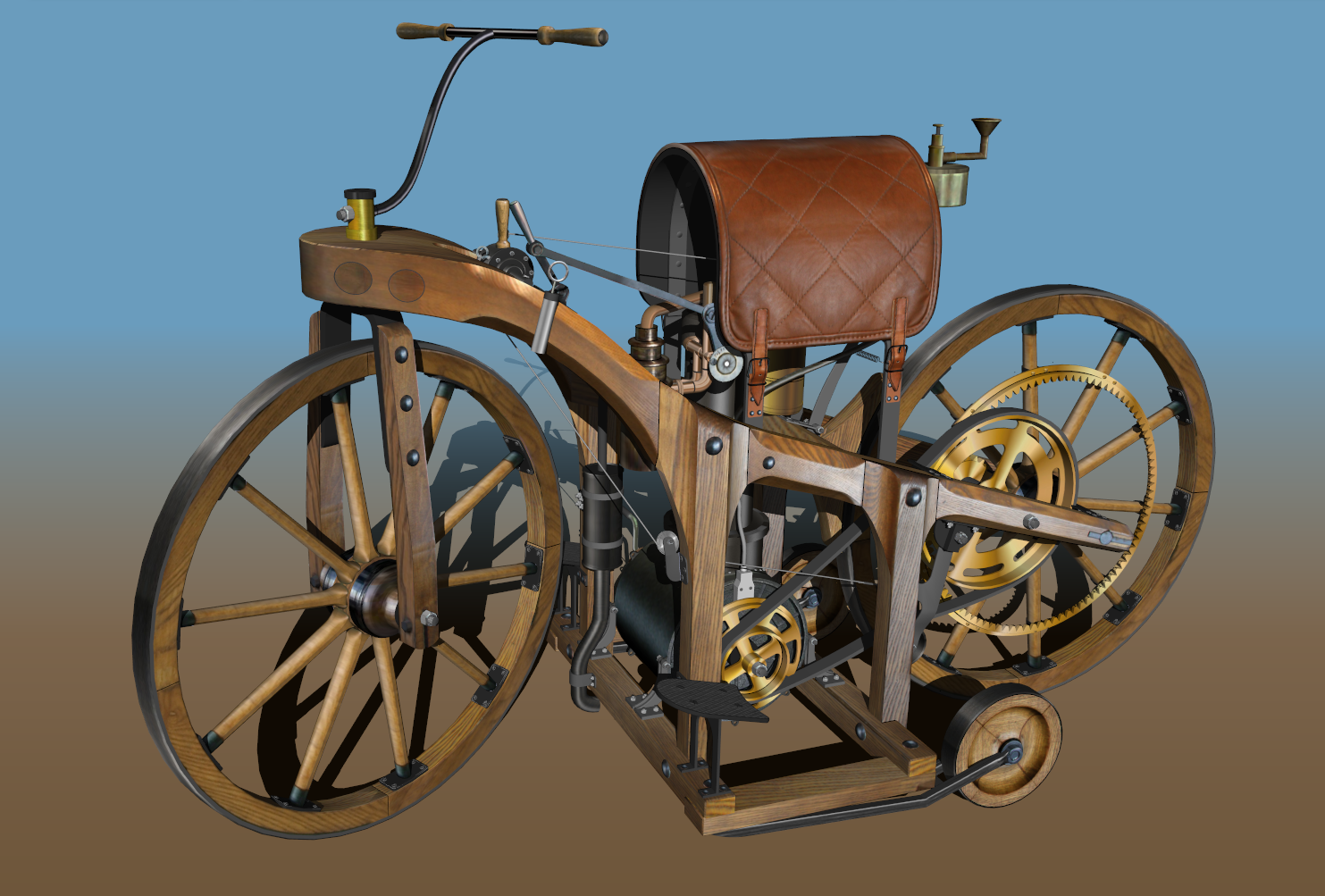
Not to mention the fact that the seat was just thin padding over a steel frame (according to rumors on it's very first outing the seat caught fire)
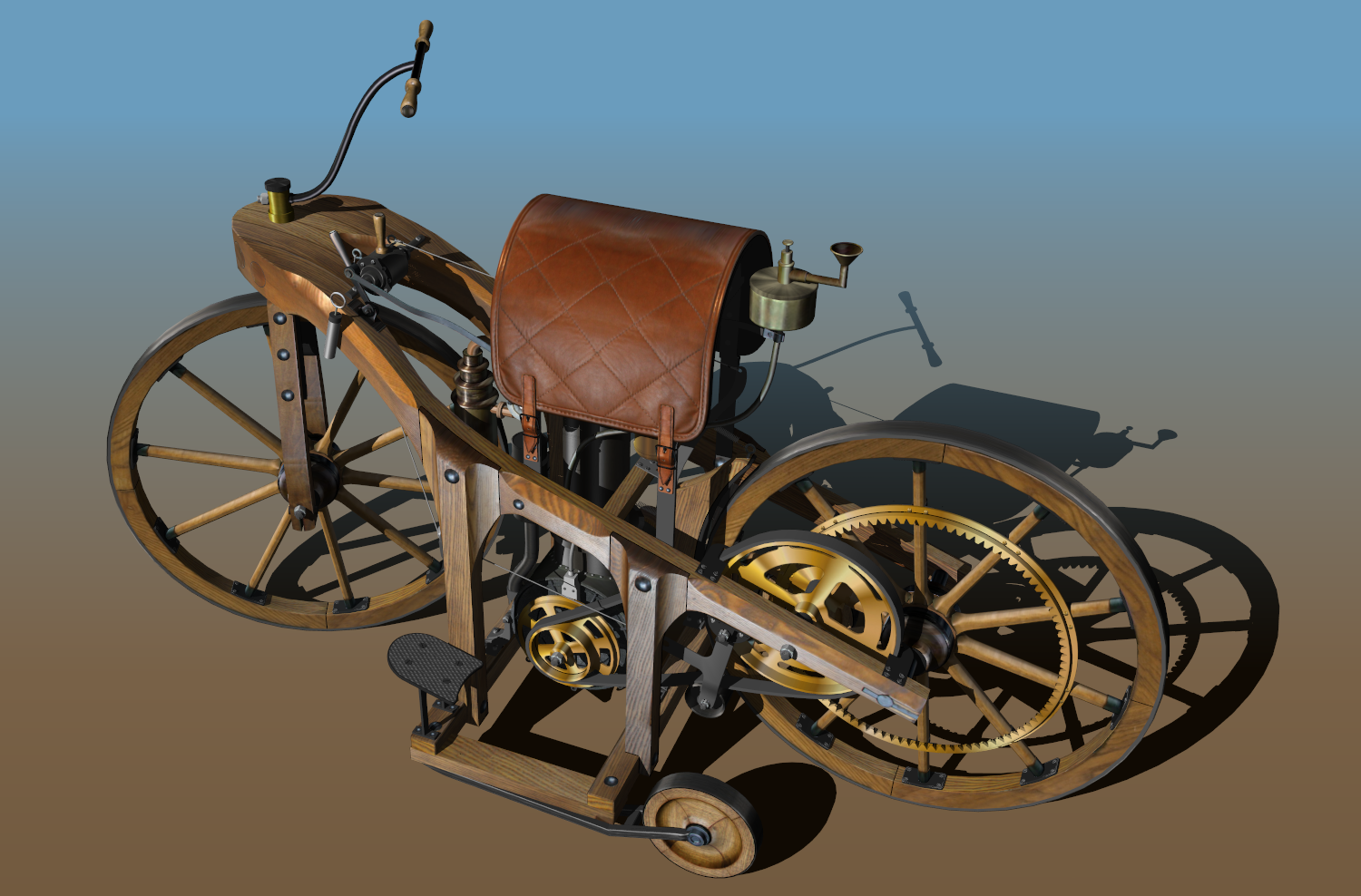
Pulling back on the handle increased tension on the drive belt while at the same time released the "brake"
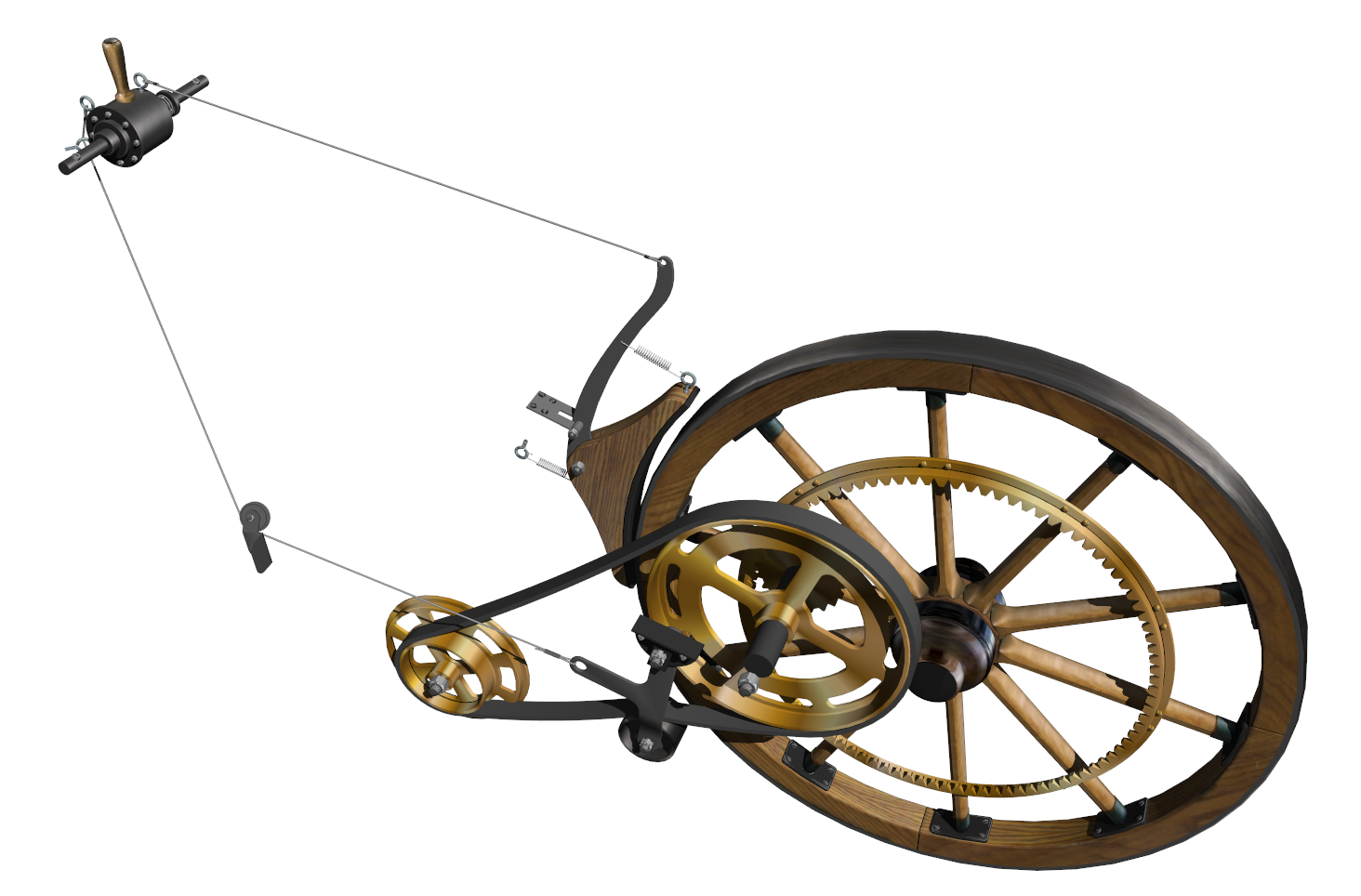
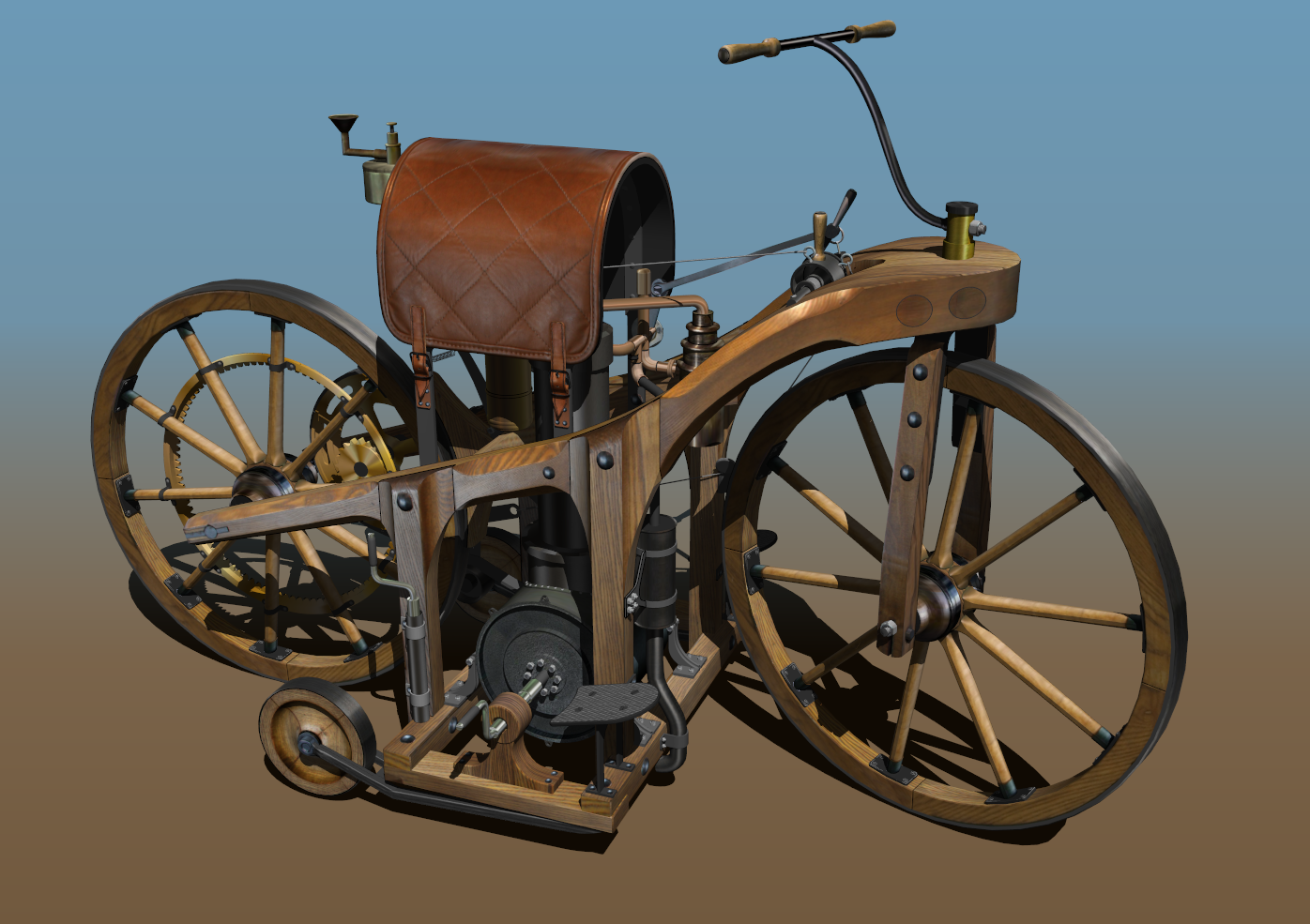
When not being used to start the engine the crank (shown here in both positions) was stored in a tube attached to the frame.

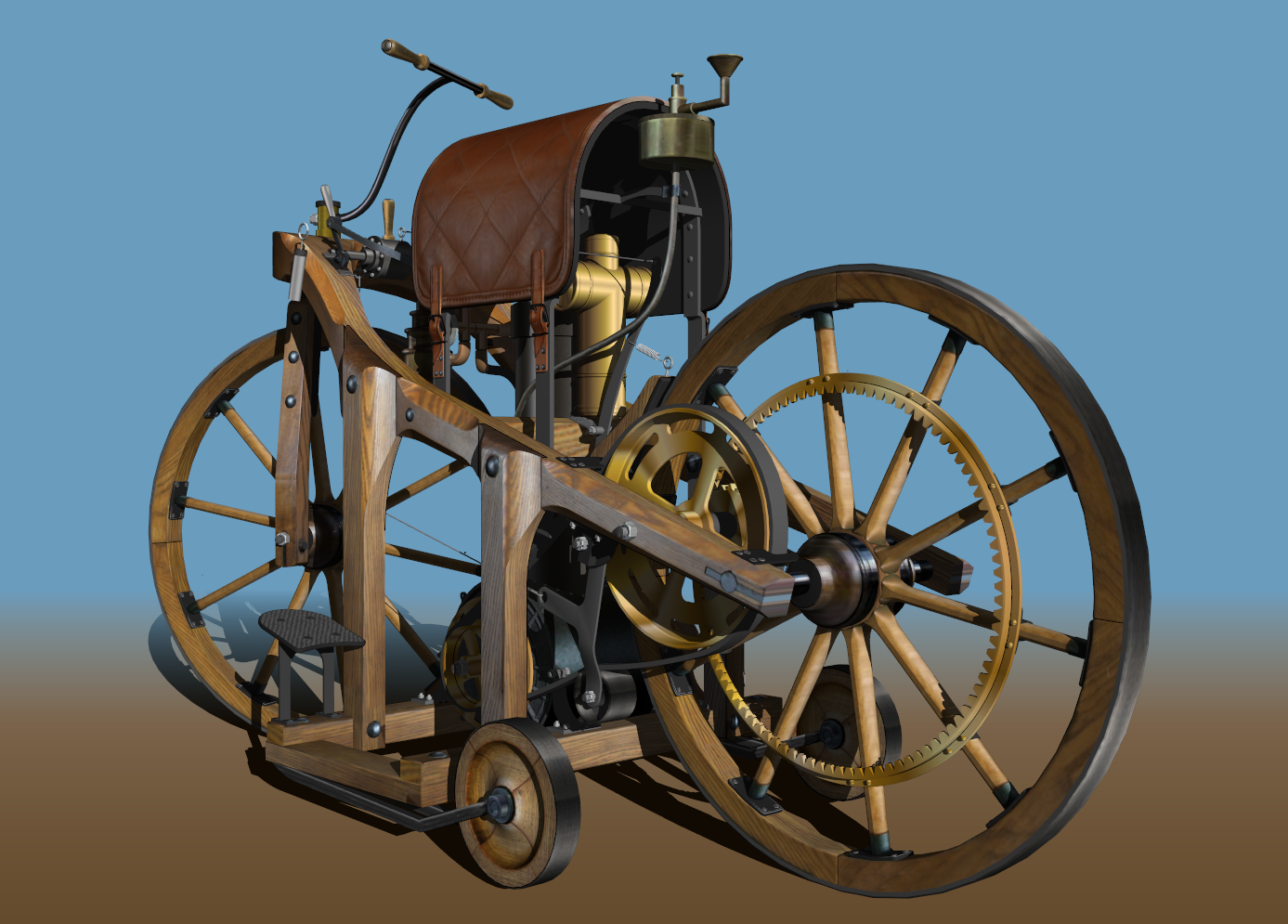
The engine gave me the most trouble. Every single replica had a different version, some looked like they cobbled them together from an erector set. I finally just did what I could and called it quits. (I have no idea what the silver tube with the ring sticking out the top is or what it does, but it was on several of the replicas and more importantly it was on the original, so there it is)

The restored shop in Stuttgart where the Reitwagen was conceived and built. I spent two years in Germany as a reporter for the Stars and Stripes, and Stuttgart was part of my beat area, so I probably was very close to this without realizing it.
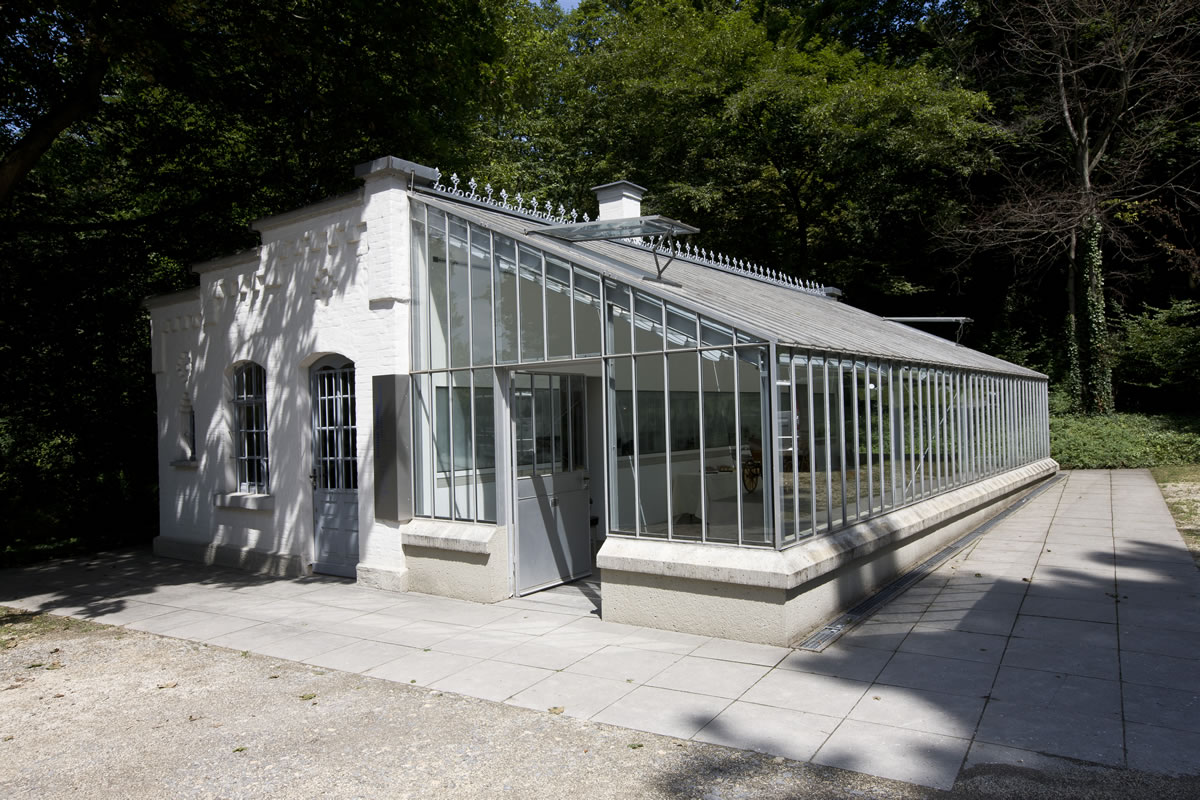
The Daimler engine went on to power the first gasoline engine powered boat in 1886
and the world's first self powered airship in 1888
Gottlieb Daimler
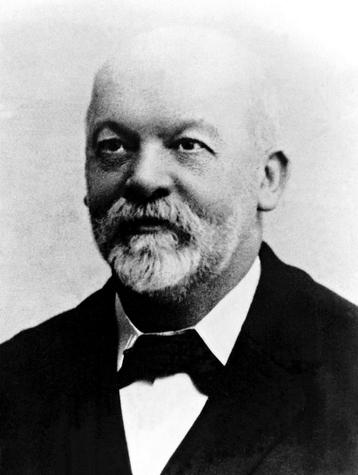
Well, there it is for what it's worth. Figured it was something to do tonight while we're getting hammered by the first snowstorm of the season. Complete whiteout, and it's supposed to last for the next 24 hours or so. Michigan

-
Epic... The texture work is amazing. And the seat... gotta show us the polys.
-
Thanks.
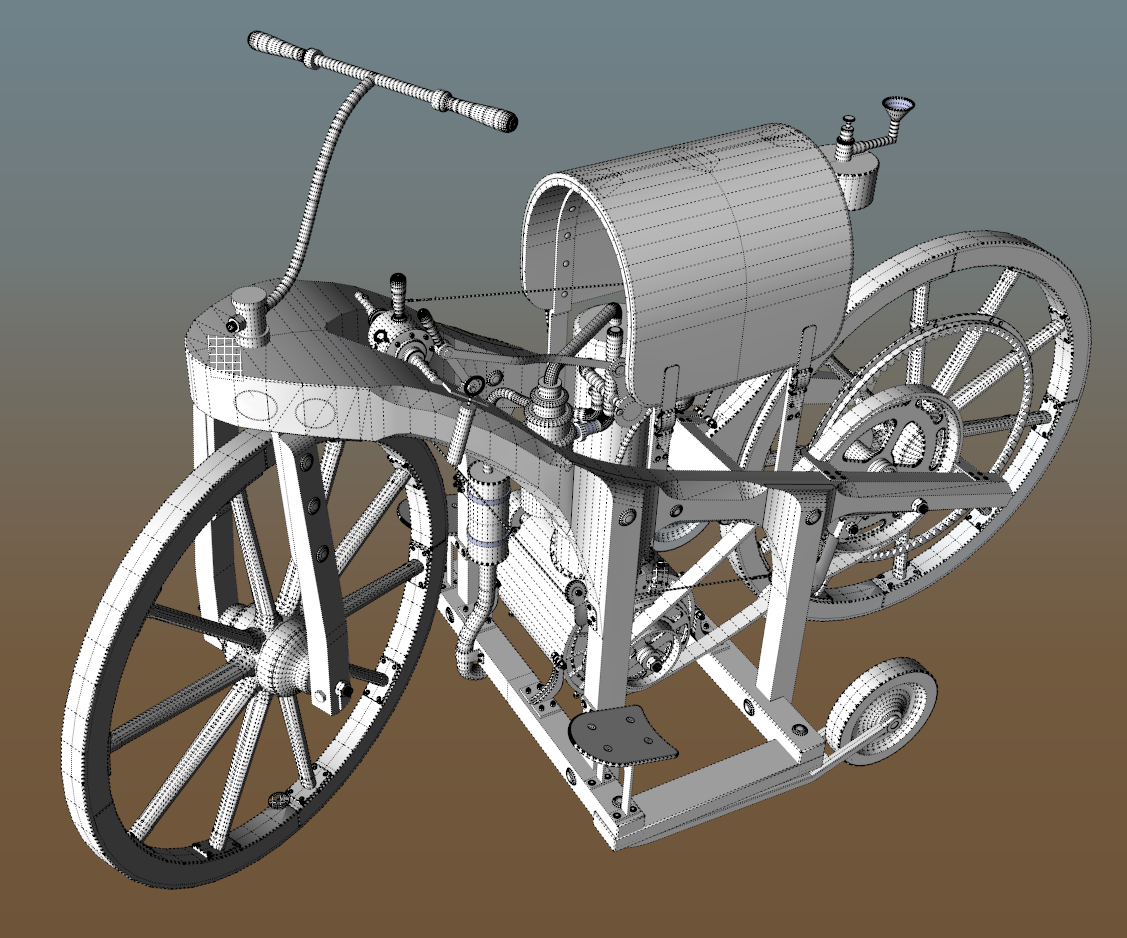
Here's a cool 3D of one of the better replicas (if you have a pair of those cheap 3D glasses with the red and blue lens)
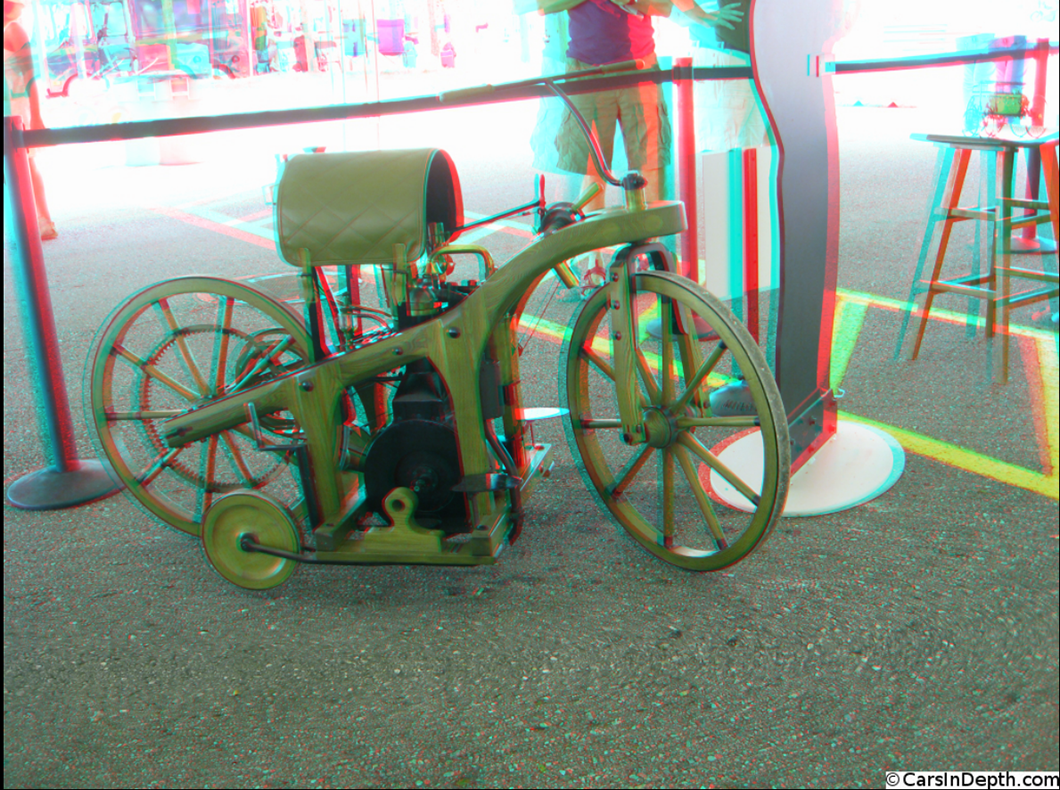
-
And here's one of the sillier replicas

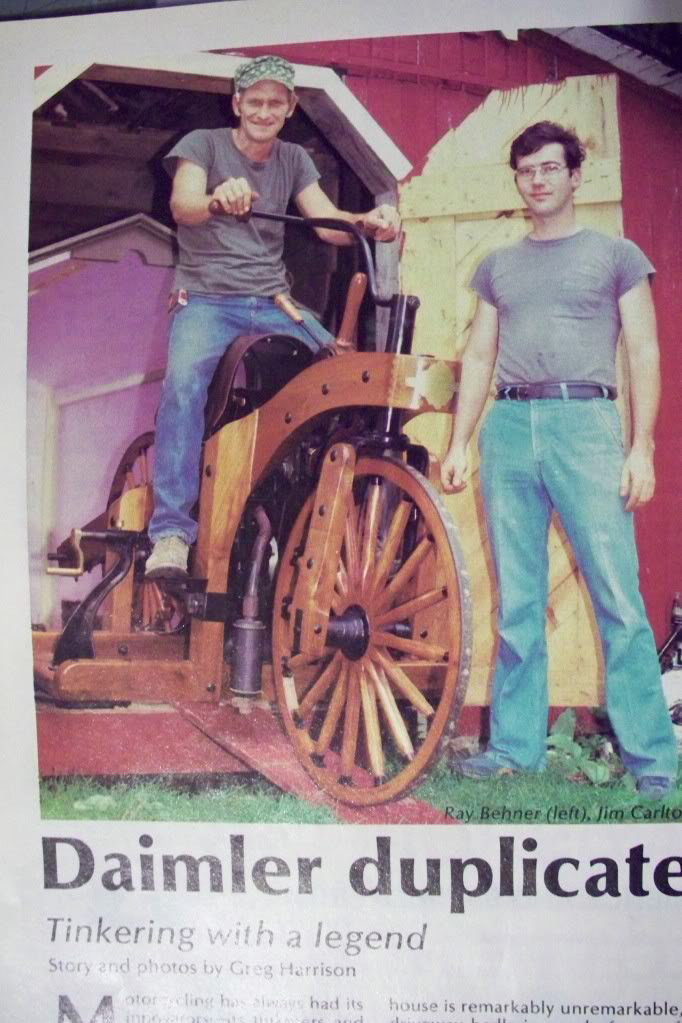
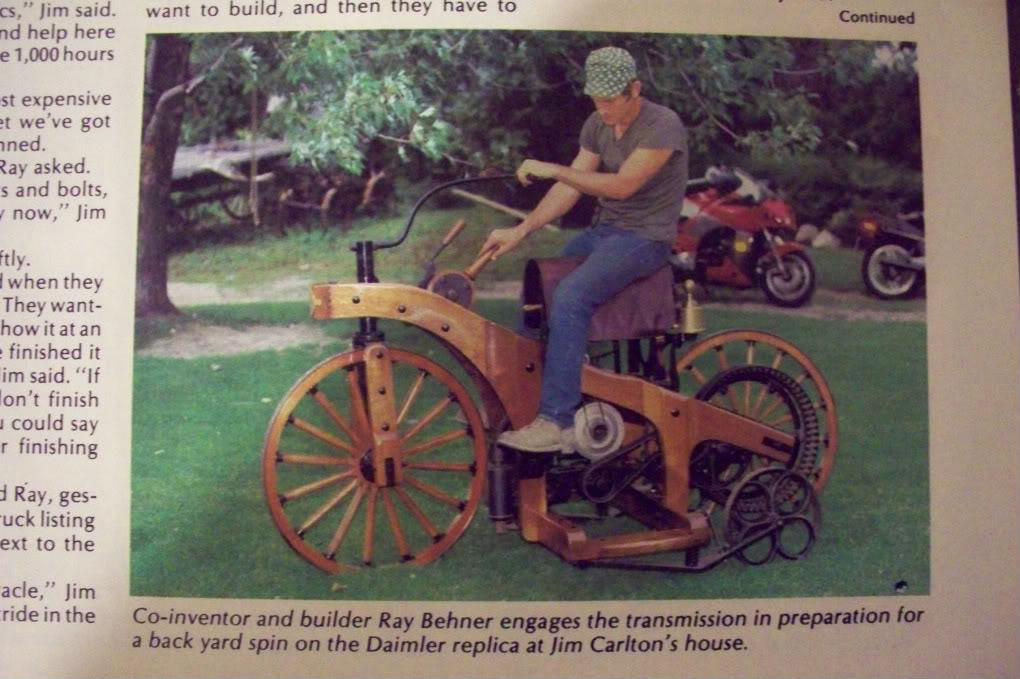
-
So that saddle seat is pure texture? did you model it in high poly first to build that texture? Your model belongs in a museum...
-

I was sure you will come out with something stunning as you always do !
You exceeded yourself with this one. One of your finest ! You are phenomenal with the textures ! Well done ! -
@krisidious said:
So that saddle seat is pure texture? did you model it in high poly first to build that texture? Your model belongs in a museum...
Nothing special on my part for the seat - just used this photo, massaged it a bit

-
Great modeling & texturing as usual.

-
That is so amazing it is not even funny...
I tip my hat and bow to greatness.
-
Steve, a picture paints a thousand words......

Just as well, i'm speechless
John
-
Steve, you are bleedin' good mate, fantastic renders too. I am truly in awe of the product you have shown here, thanks.
-
@mike amos said:
fantastic renders too.
That's the truly mindblowing part, they aren't renders, pure Sketchup.
-
Your kind words are much appreciated.
But it ain't perfect.
-
in terms of direct sketchup output and presentation you have no peers
-
This definitely belongs in the "Most Impressive SketchUp Modeling" topic.
-
So good. I doff my cap, throw a virtual high five and offer a cyber fist pump. Bravo, sir.
-
............. Such Talent!!!! Bravo.
-





Everything about it is amazing! Where did you find the engineering pictures and specs? The mechanical detail alone is stunning!
-
I could ask a hundred questions about this one, but the first one that comes to mind is how did you make the chamfers on the frame? I see the hidden geometry and I'm still stumped.

-
excellent!
Advertisement







